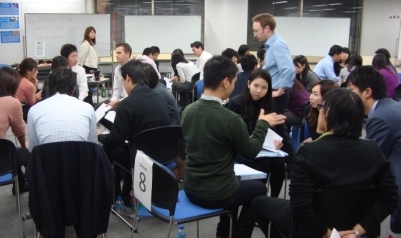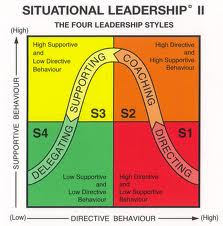
For every success story there are a thousand failures. That’s the reality of change. The fragile seeds of hope, innovation, insight and ideas are everywhere, but the harsh environments in which we live are often not conducive to their continued growth. Just like a delicate seedling that needs nutrients, water and shelter from the elements, learners need plenty of support for their new ideas to take root. Early, often and enthusiastic support is an under-appreciated and essential component of EVERY change. Take ownership of this reality by both giving and asking for support.
 Be aware that some of the people we love and respect may inadvertently crush these innocent hopes and dreams of change in order to “protect” us for the pain associated with failure. For this reason it’s important to reach out and build learning relationships with an extended group of supports to provide a more balanced set of opinions to consider moving forward. A diverse group of supportive relationships is also a key component of happiness based on research from Harvard’s Shawn Achor.
Be aware that some of the people we love and respect may inadvertently crush these innocent hopes and dreams of change in order to “protect” us for the pain associated with failure. For this reason it’s important to reach out and build learning relationships with an extended group of supports to provide a more balanced set of opinions to consider moving forward. A diverse group of supportive relationships is also a key component of happiness based on research from Harvard’s Shawn Achor.
Your willingness to provide support for others is a subtle, yet powerful form of leadership that exists within us all. Never underestimate the impact that your words and actions may have on the growth of others. A timely smile, kind word or simple gesture is often all it takes to maintain the momentum necessary to overcome the inevitable challenges that we must overcome to make changes stick. The key is to be present when you do connect and be attentive to the downward shifts in someone’s attitude or energy. Ask and encourage even if they say “everything is fine”, because we know that is a code word for “something’s wrong”.
 I recently had a wonderful new connection with a 2 icons in the field of organizational change. Jim Kouzes and Ed Schein are both award winning authors with decades of successful consulting experience. Surely these conversations would greatly impact my professional growth. Yet in meeting with these gentlemen I’ve walked away feeling that we each took something valuable away from our conversation. It reminds me that support and encouragement is a HUMAN need that is essential for tackling the many changes that lie before us all.
I recently had a wonderful new connection with a 2 icons in the field of organizational change. Jim Kouzes and Ed Schein are both award winning authors with decades of successful consulting experience. Surely these conversations would greatly impact my professional growth. Yet in meeting with these gentlemen I’ve walked away feeling that we each took something valuable away from our conversation. It reminds me that support and encouragement is a HUMAN need that is essential for tackling the many changes that lie before us all.
This was reinforced again this week as I reflect on one aspect of teaching that I love most – creating a safe learning environment for new seeds of change to take root. This safety aspect addresses the human brain’s basic needs that are best described in David Rock’s book “Your Brain at Work”.

Too much stress and the brain kicks into “fight or flight” mode, releasing cortisol and adrenaline into the David’s SCARF model has provided me with great insights into how I can help every participant find an appropriate balance between comfort and challenge. By addressing these 5 stress “triggers”, I’m able to create that supportive learning environment with amazing consistency…bloodstream which drastically alters the chemistry of the moment. Excessive stress also shifts energy away from the pre-frontal cortex – the part of the brain responsible for conscious thinking and decision making. (Pretty important to the learning I’m sure you’ll all agree.) Conversely, not enough stress keeps the brain stuck in “business as usual” mode. Without sufficient interest or intrigue the brain does not engage in re-sequencing of neuro-pathways that IS the physical change in the mind that leads to new thoughts or behaviors.
- Status – participants ideas are all valued and equal regardless of title, nationality, ethnicity or gender
- Certainty – sharing objectives, agendas and clear activitiy instructions to highlight the path forward
- Autonomy – providing choices on how and when to participate in activities and group discussions
- Relatedness – building new connections to build rapport and a shared identify of the group
- Fairness – encourage equal participation so that all voices are heard and valued
 My global leadership program in Tokyo this week included 40 participants from 9 countries meeting for the first time. For many of these new leaders, this was their first international trip in addition to the first time meeting colleagues from their company face to face. As you can imagine, the range of emotions and stress was all over the map. Yet they are all here for a common purpose to learn. By the end of 2 days, the insights shared, commitments made, friendships built and growth demonstrated was incredible.
My global leadership program in Tokyo this week included 40 participants from 9 countries meeting for the first time. For many of these new leaders, this was their first international trip in addition to the first time meeting colleagues from their company face to face. As you can imagine, the range of emotions and stress was all over the map. Yet they are all here for a common purpose to learn. By the end of 2 days, the insights shared, commitments made, friendships built and growth demonstrated was incredible.
What made that possible, yet again, was a combination of structured design and a persistent “in-the-moment” coaching approach during activities that enables me to make the subtle suggestions to share behaviors WHILE they are being formed and practiced. I believe this is one of the most important components of my success as well as the most satisfying part of my job.
The same principles apply for project managers, parents, mentors, teachers, friends and coaches everywhere who want to support others to accelerate the speed and success rate of change.
Legendary football coach Mike Dicka’s proclamation that “you get what tolerate” which emphasizes a key point regarding support. Don’t take my advice as all sugar and sunshine. Support must come in a balanced dosage of encouragement and constructive feedback. The ratio of 4 to 1 is necessary to overcome the brain’s natural sensitivity to perceived threats. Encourage those who you are supporting to continue doing the actions that contribute towards their dreams and goals and make adjustments in the areas that do not.

Ken Blanchard’s Situational Leadership model highlights this constantly changing balance between support and direction throughout the learning process. What I like about this approach is that it requires an active partnership between learner and leader throughout the process. Even the most successful individuals know that constant growth and improvement is essential to stay on top. That means that they too will need support and direction as they take on new skills, projects, and roles. This is why Jim and Ed were able to gain value from our conversations mentioned earlier. They were both embarking on changes too.
Our families, teams, fraternities, gangs, clichés, communities, classes and friends are all essential part of the support systems. You don’t need a certain tile to make a positive impact in someone’s life.
But you must take ACTIONS to make a difference.
Hopefully you’ve got some new ideas and insights to impact anyone around you in small yet significant ways starting NOW.
Enjoy a supportive journey though life – it’s gratifying beyond words!
Jeff Richardson
